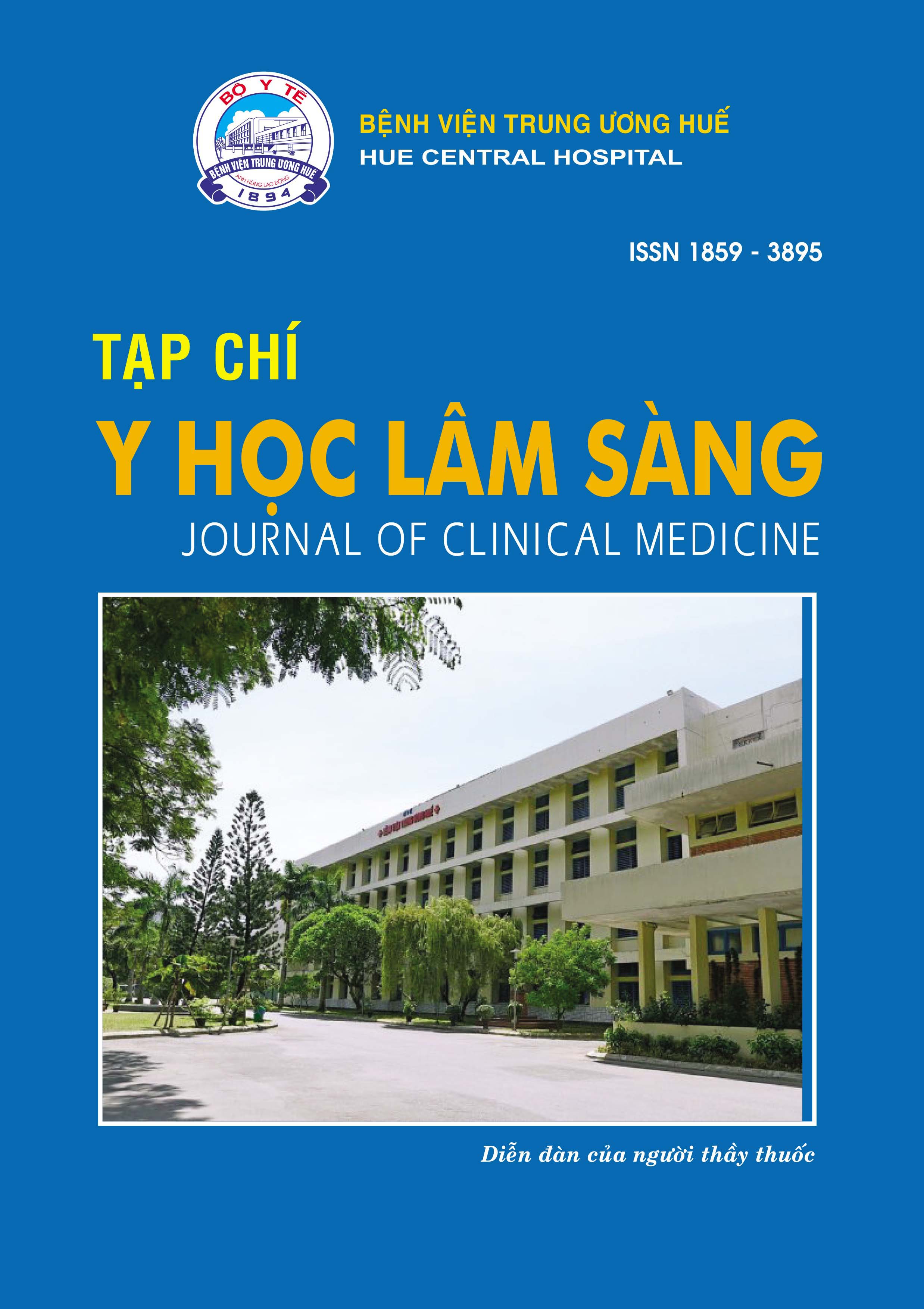Abstract
Objects: (1) Survey the characteristics of acute complications in severe stroke patients treated at stroke Center, Hue Central Hospital; (2) Evaluate the effectiveness of patient care in prevention and treatment of acute complications after stroke.
Subjects and method: A prospective study is conducted on 100 severe stroke patients with Glasgow score at hospitalization 5 - 12 . The rate of complications of pneumonia, pressure ulcers, malnutrition, hyperglycemia were 14%, 5%, 6% and 12% respectively. All patients ware given with comprehensive and personalized care with the high rate of good functional outcome (29%). Besides, all discharged patients were free from pneumonia and malnutrition, pressure ulcer ratio was lowered to 1% and 42% of those with hyperglycemia achieved normal glycemic index and no longer required insulin.
Result: The effectiveness of nursing care was reflected in the low mortality (5%).
References
Powers, W.J., et al., 2015 American Heart
Association/American Stroke Association
focused update of the 2013 guidelines for the
early management of patients with acute ischemic
stroke regarding endovascular treatment: a
guideline for healthcare professionals from the
American Heart Association/American Stroke
Association. Stroke, 2015. 46(10): p. 3020-3035.
Reeves, M.J., et al., Sex differences in stroke:
epidemiology, clinical presentation, medical
care, and outcomes. The Lancet Neurology,
7(10): p. 915-926.
Kissela, B.M., et al., Age at stroke: temporal
trends in stroke incidence in a large, biracial
population. Neurology, 2012. 79(17): p. 1781-
Tobi, K. and N. Okojie, characteristics and
outcome of stroke patients with cerebrovascular
accident at the intensive care unit of a tertiary
hospital in nigeria. Journal of the West African
College of Surgeons, 2013. 3(1): p. 1.
Venketasubramanian, N., et al., Stroke
epidemiology in south, east, and south-east Asia:
a review. Journal of stroke, 2017. 19(3): p. 286.
Martino, R., et al., Dysphagia after stroke: incidence,
diagnosis, and pulmonary complications. stroke,
36(12): p. 2756-2763.
Saied, W.I., et al., A comparison of the mortality
risk associated with ventilator-acquired bacterial
pneumonia and nonventilator ICU-acquired
bacterial pneumonia. Critical care medicine,
47(3): p. 345-352.
Bruno, A., et al., Acute blood glucose level and
outcome from ischemic stroke. Neurology, 1999.
(2): p. 280-280.
Amir, Y., Quality of pressure ulcer care in
Indonesian hospitals. 2015.
Corrigan, M.L., et al., Nutrition in the stroke
patient. Nutrition in Clinical Practice, 2011.
(3): p. 242-252.
Chai, J., et al., Prevalence of malnutrition and
its risk factors in stroke patients residing in an
infirmary. Singapore medical journal, 2008.
(4): p. 290.
J Prosser-Loose, E., et al., Protein-energy
malnutrition alters hippocampal plasticityassociated protein expression following global
ischemia in the gerbil. Current neurovascular
research, 2010. 7(4): p. 341-360.
Feigin, V.L., B. Norrving, and G.A. Mensah,
Global burden of stroke. Circulation research,
120(3): p. 439-448.
Bösel, J., Use and timing of tracheostomy after
severe stroke. Stroke, 2017. 48(9): p. 2638-2643.
| Published | 08-01-2025 | |
| Fulltext |
|
|
| Language |
|
|
| Issue | No. 63 (2020) | |
| Section | Original article | |
| DOI | 10.38103/jcmhch.2020.63.11 | |
| Keywords |

This work is licensed under a Creative Commons Attribution-NonCommercial-NoDerivatives 4.0 International License.
Copyright (c) 2020 Journal of Clinical Medicine Hue Central Hospital

